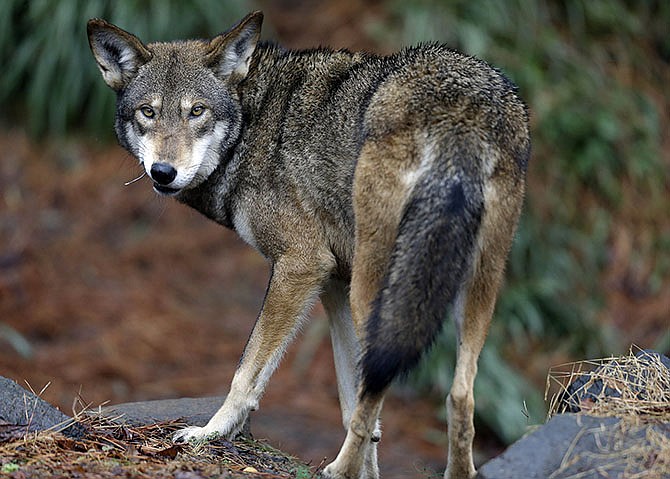RALEIGH, N.C. (AP) - Federal officials said they won't release any more endangered red wolves in eastern North Carolina while they study the feasibility of maintaining the only wild population of the species.
The U.S. Fish and Wildlife Service said that no more captive-bred wolves will be used to bolster the population of the carnivores roaming several counties in the eastern part of the state. It will continue to manage the wild population, which was recently estimated to be between 50 and 75 animals.
A decision on whether to end or modify the program has been expected for months as the government undertook a review of the 30-year-old program to restore the wolves to the wild.
But officials said they are still gathering information and expect to finish their review by the end of the year.
"There will likely be some who will suggest we are walking away from recovery efforts for the red wolf and simultaneously there will be others who might say we're holding on too tight," said Cindy Dohner, the Southeast regional director for the wildlife service.
Wildlife advocates say introducing pups born in captivity to wild female wolves has helped replace wolves killed by gunshots, car accidents and other causes. The most recent release included two captive-born pups in 2014, said Pete Benjamin, field supervisor for the wildlife service in Raleigh.
Sierra Weaver, a Chapel Hill-based attorney for the Southern Environmental Law Center, said the government appears to be backing away from an active effort to restore the wolves.
"It seems to be a step away from active management and a step toward leaving the wolves out there to see what happens," she said.
The announcement comes months after a government-commissioned report criticized how the program is run. The evaluation issued in late 2014 found flaws in the program, ranging from inadequate understanding of population trends to poor coordination with local managers.
Once common around the Southeast, the red wolf had been considered extinct in the wild as of 1980 because of factors including hunting and habitat loss. In 1987, wildlife officials released red wolves bred in captivity into the wild in North Carolina.
The wild population of red wolves in North Carolina had hovered around 100 in recent years, according government estimates, with more than a dozen recorded deaths each of the past two years.
Wildlife officials said Tuesday they recently lowered their estimate of the population based on their tracking of the wolves with radio collars, and not because of a significant number of deaths. Benjamin said several wild litters are born each year, but the number of pups varies.
Earlier this year, state wildlife officials asked the federal government to end the program and declare the wolves extinct in the wild, citing the negative evaluation. They say the wolves pose problems when they roam onto private land.
Conservationists argue the program has been successful and politics - not natural factors - have been the biggest threat to the wolves. The species' existence has been debated in courtrooms, at high levels of the federal government and in 48,000 public comments.
Elsewhere, other species of wolf have been the subject of conservation efforts and court battles. The gray wolf has rebounded to a population of several thousand in the Midwest and Northern Rockies after it was nearly wiped out from the lower 48 states by the 1970s. In the Southwest, efforts to restore the Mexican gray wolf in southwestern states have been hampered by politics, illegal killings and other factors. About 100 of those wolves are in the wild in several states.

